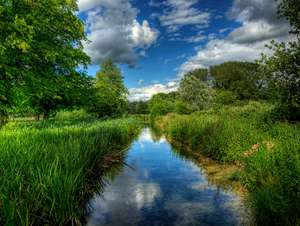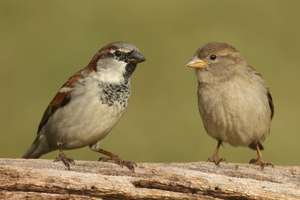House Sparrows


House Sparrows are a lot rarer than they used to be.
Since 1970, almost 30 million House Sparrows have vanished from the UK, which means they’re now on the UK Red List of Birds of Conservation Concern. They’re doing particularly badly in cities but are one of the birds which really benefit from nature-friendly urban-gardening.
The house sparrow is an opportunistic bird of towns and cities, parks, gardens and farmland. House sparrows feed on a variety of foods, including buds, grains, nuts and scraps, and will visit birdtables and feeders. They live in colonies and nest in holes or crevices in buildings, among Ivy or other bushes, and in nestboxes; they use a variety of materials to make their nests.
What you can do to help House Sparrows
Write to our local MP, Danny Chambers, tell him how important nature recovery is to you. Tell him to continue to support and promote the Climate and Nature Bill, this landmark bill aims to reverse the damage done to nature to species like House Sparrows. Click here to send Danny a secure message.
Providing nest boxes, planting wildflowers, and letting areas of your garden grow wild can create space for birds like House Sparrows. The RSPB (Royal Society for the Protection of Birds) can provide information about how you can make these changes.
As for the bigger picture, global heating is contributing to endangering thousands of species, including House Sparrows. Larger and more systemic changes are needed to address this. The world needs to move away from burning fossil fuels as quickly as possible.
As well as making personal changes, such as changing how you heat your house, how you source your electricity & how you travel around, you can use your voice to advocate for a shift to renewable energies. When we’ve made the transition to renewables we will all benefit from less pollution and cleaner air, not just the House Sparrows!
